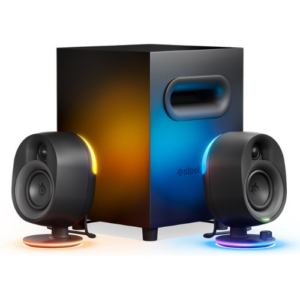If you’ve got room next to your monitor, the SteelSeries Arena 7 speakers are a great complement to any gaming rig seeking beefier audio.
SteelSeries Arena 7 speakers review
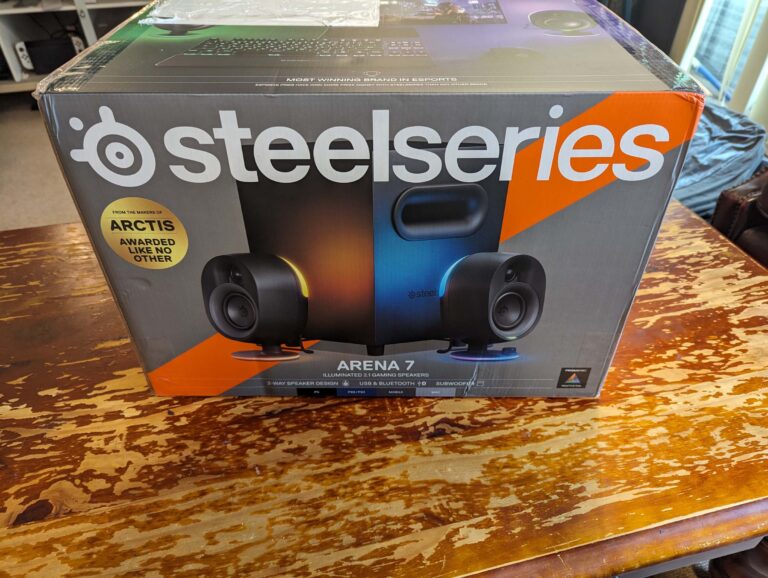
Unless you exclusively use a gaming headset or are comfortable with tinny monitor audio, it’s absolutely worth considering an investment in decent PC speakers. Your ears will thank you. There’s a variety of PC speakers to suit tastes, from soundbars like the Razer Leviathan V2 and Creative Sound Blaster Katana V2, through to traditional two-or-more speaker configurations from Razer, Logitech and SteelSeries. While the cheaper SteelSeries Arena 3 speakers didn’t overly impress me, it didn’t take long for the SteelSeries Arena 7 speakers to win me over.
How much do SteelSeries Arena 7 speakers cost in Australia?
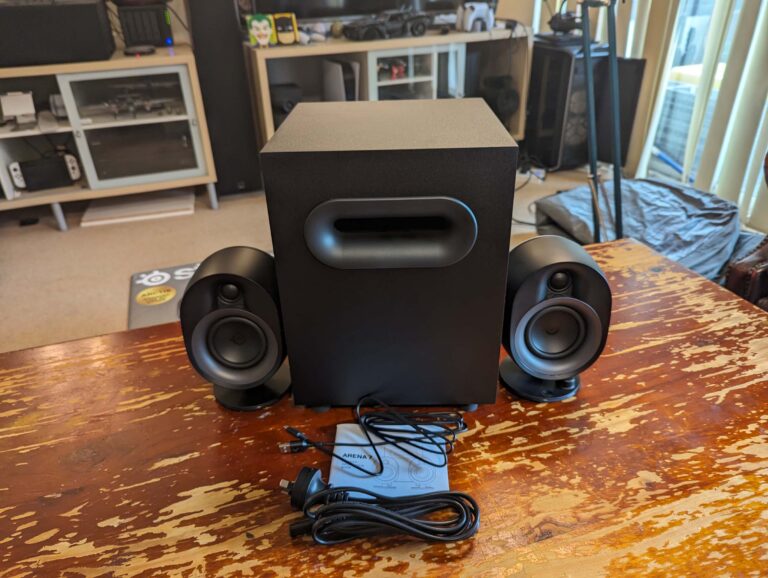
At $619 RRP, the SteelSeries Arena 7 speakers aren’t exactly cheap. Around this price is where you can nab Audioengine speakers, albeit without a subwoofer. For a practical equivalent, you’re looking more at something like the Razer Nommo Pro (or its V2 revision) for an RRP closer to $700. Otherwise, you go the other way to noticeably cheaper options from Logitech, like the G560 for $399 or the Z623 for $299.
SteelSeries Arena 7 speakers design and ease of use
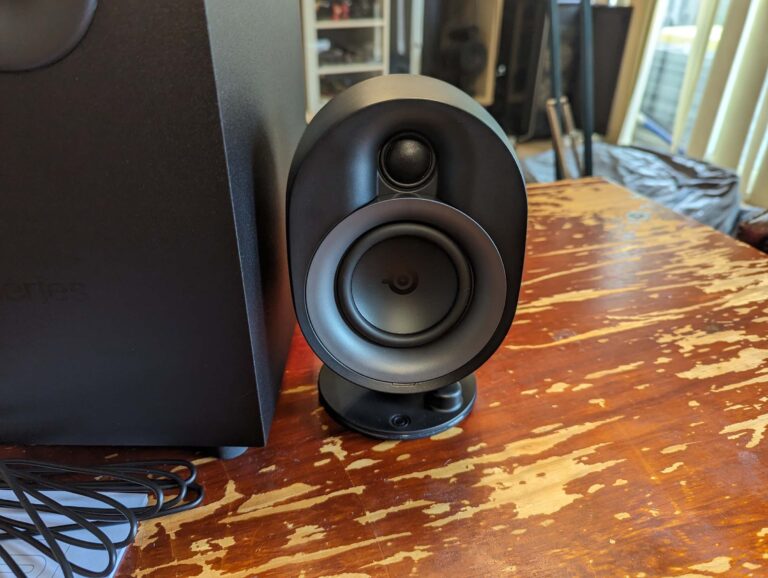
PC speakers are typically built to be plug-and-play, and the SteelSeries Arena 7 speakers are no exception. My biggest setup gripe is there’s only a USB-C to USB-A cable; I’d have preferred a USB-C to USB-C cable or an adaptor for greater wired versatility. Thankfully, subbing in a double-ended USB-C cable didn’t have any issues when I was testing on a USB port-limited laptop.
In terms of setup, the left and right speakers have fixed cables in their backs, which then connect to dedicated clearly marked ports on the back of the subwoofer. The subwoofer houses a lot of the main connectivity options: USB-C, 3.5mm aux, plus optical in and out. There’s also a power connector and switch, plus a subwoofer volume dial, which I instinctively maxed out. Note that the speakers are designed to sit flat on their respective stands, so you may have to raise a monitor or make room beside one (or between them if you have multiple) to get an uninterrupted line of sound.
The only other physical controls are on the right speaker: a volume dial and mute button. Well, it’s a mute button if you tap it. Hold it for five or so seconds and that’s how you sync Bluetooth devices, with a handy blue light on the right speaker to indicate available for connections (flashing) and connected (solid). At this price, I’d love an included remote control—the Katana V2 has one, and it’d add extra versatility for 4K TVs and the like—but the basics are within reach and a good gaming keyboard has your multimedia keys covered these days anyway.
SteelSeries Arena 7 speakers soundscape testing
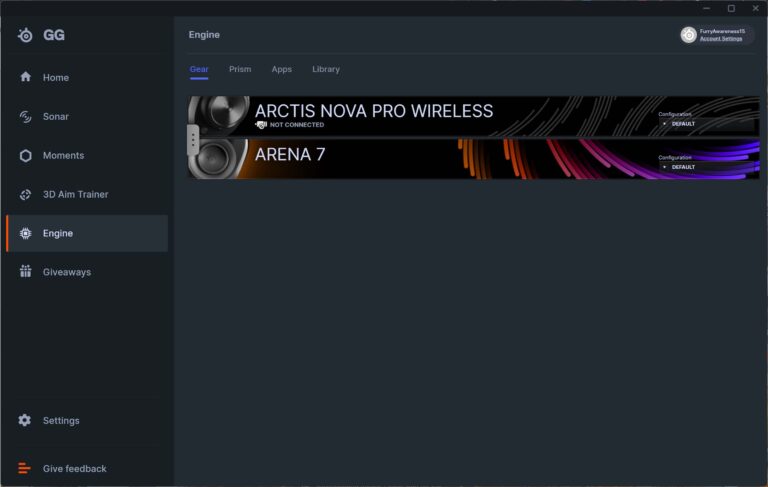
After hours of use, I can’t fault the sound quality of the SteelSeries Arena 7 speakers. At practical lower-to-mid volumes, the highs, lows and mids are crisp and clear whether gaming, listening to music or watching videos. And at higher volumes, the Arena 7 speakers don’t distort, so even your neighbours can appreciate that when they come to yell at you to turn your music down. I’m not usually a fan of RGB lighting, but the subtle lighting additions to the Arena 7s are a neat gamer aesthetic.
I spend most of my working day listening to classical music, and while I adore my everyday Katana V2 soundbar—mostly for its flat design that fits under my main monitor—the Arena 7s offer a richer soundscape. Even listening through the Reviews.org audio testing playlist hit all the right notes, offering satisfying bass for I Didn’t Come Here to Dance and 3005, while taming the layered soundscapes of Feeling Good as well as the cacophony of The National Anthem.
And then there’s gaming performance. My latest addiction is Deep Rock Galactic: Survivor, and the Arena 7s are a great complement. The early access game has a range of guns, explosions and big crashing audio at the start of each stage, which sound distinct from the rest of the soundscape and have added weight thanks to the beefy subwoofer bass. Despite the on-screen madness and myriad of audio cues, I never felt like anything got lost during my many hours of testing.
SteelSeries Arena 7 software and equaliser settings
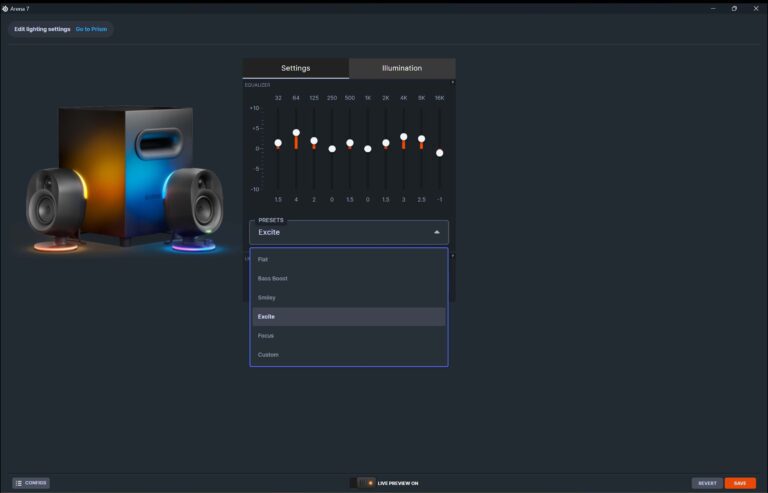
You don’t need SteelSeries GG software to use the Arena 7 speakers, but I do highly recommend installing the companion software. For starters, when I first booted up SteelSeries GG, I was prompted to perform a quick, painless firmware update. After a minute or so, I was into the settings.
There are two main screens here: settings and illumination. The illumination tab is where RGB fans can tweak lighting settings, including colours, effects and animation speed. That’s an optional tab, but you should at least spend a few seconds in the settings tab. The lighting timeout is on a practical 10 seconds, but you can extend that if you want the lightshow when tunes aren’t playing.
The real meat of this screen, though, is the equaliser. By default, the preset is on ‘Flat’. For my ears, I was a fan of both ‘Bass Boost’ and ‘Excite’, both of which offered richer lower-end playback. The ‘Smiley’ preset sounds more balanced to the mid-range, while ‘Focus’ is all about the highs. Alternatively, create your own custom equaliser settings. Live preview is enabled by default, so you’ll get real-time feedback for your level tweaks to help personalise what’s best for your ears.
Are the SteelSeries Arena 7 speakers worth buying?
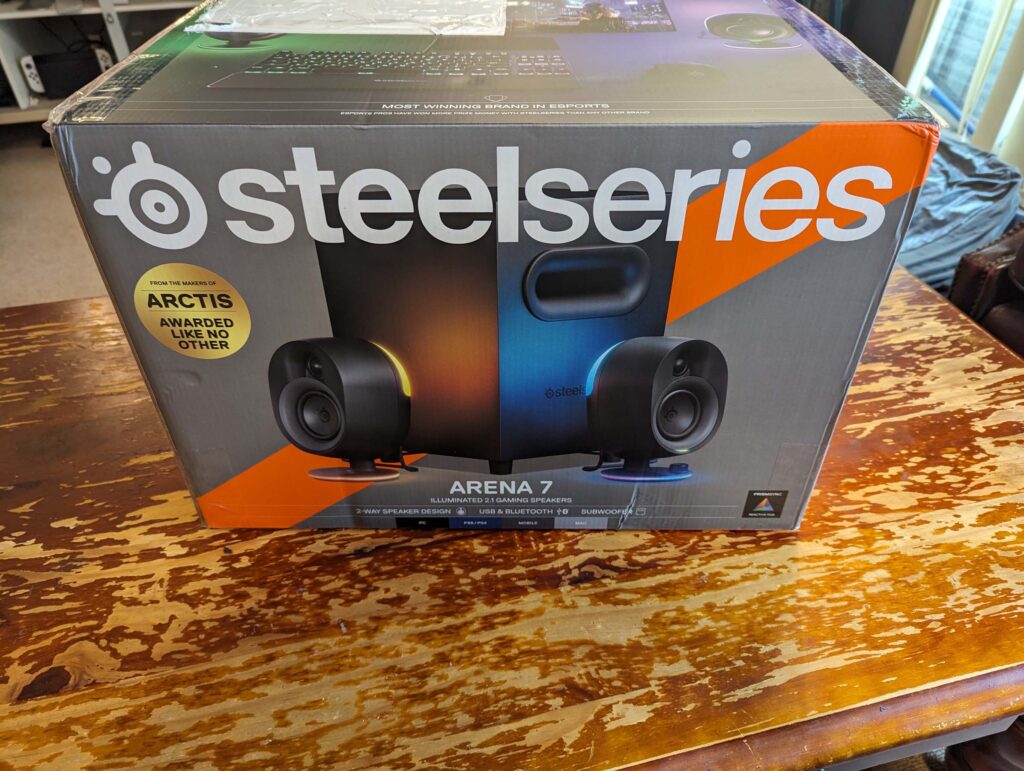
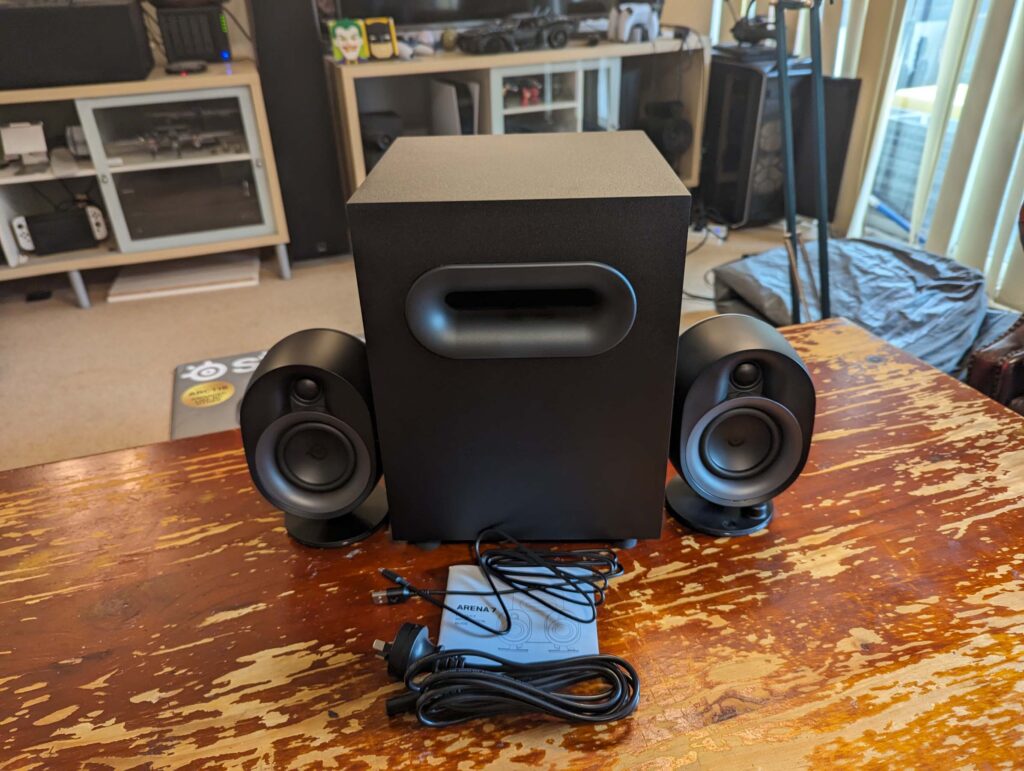
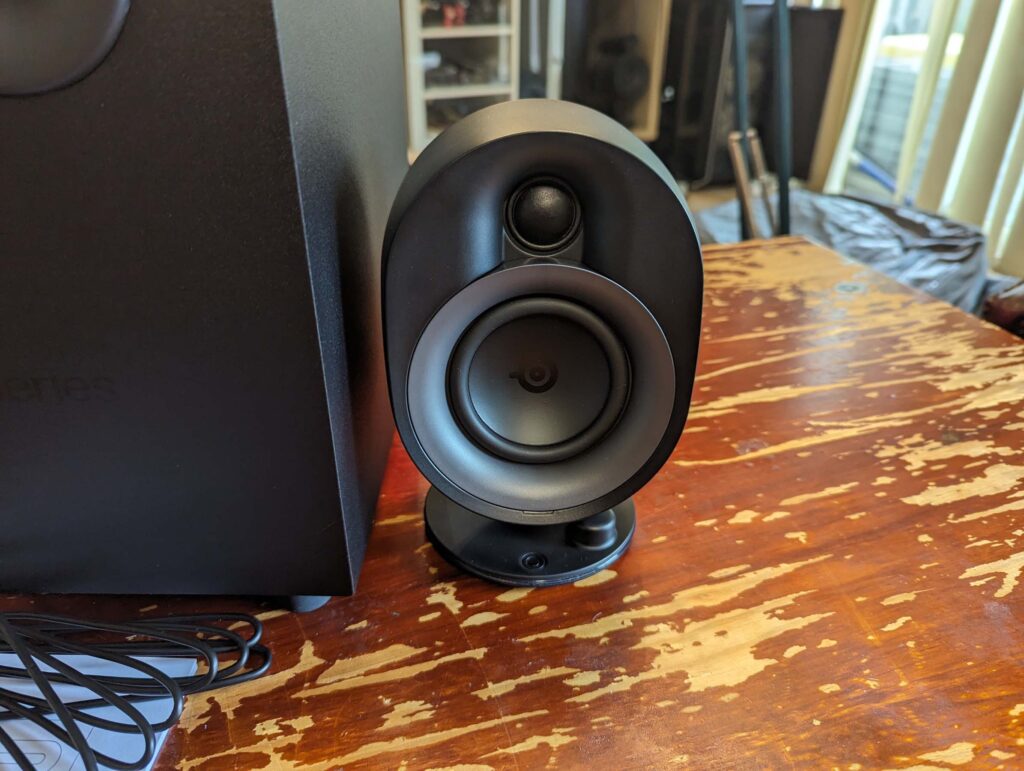
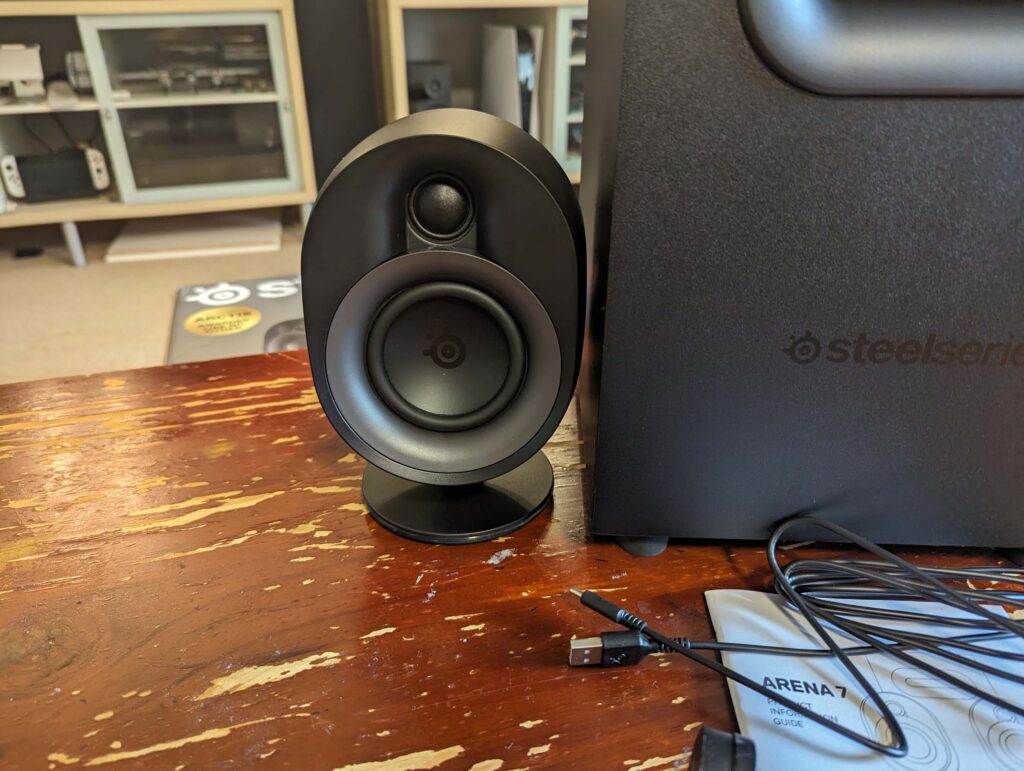
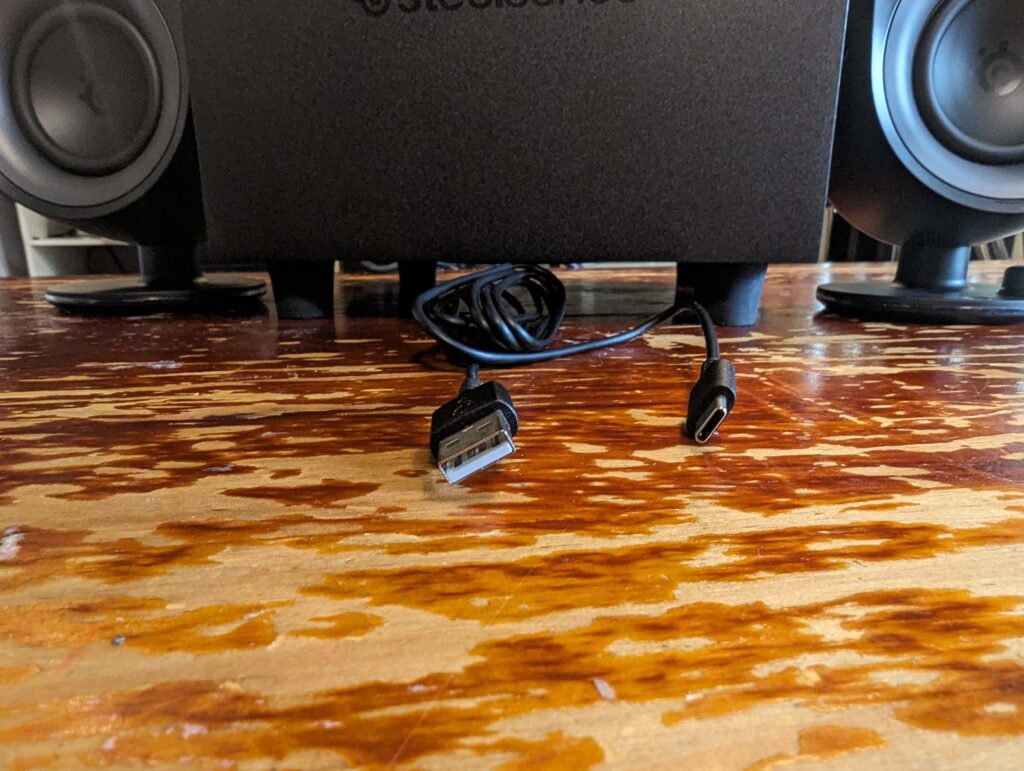
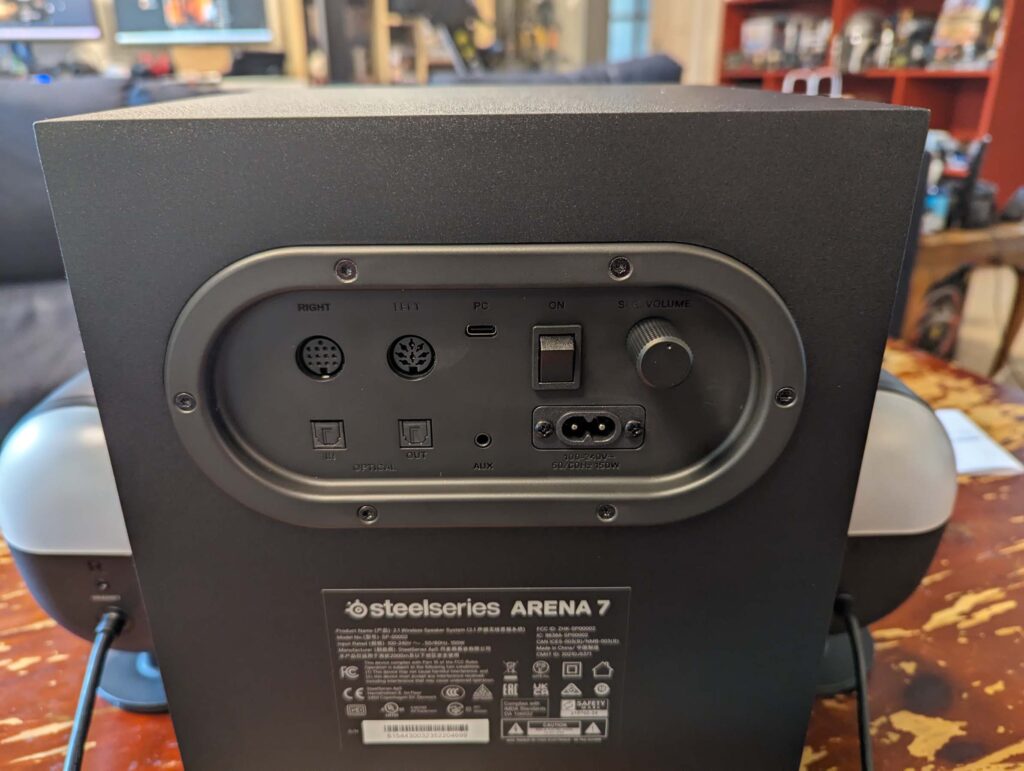
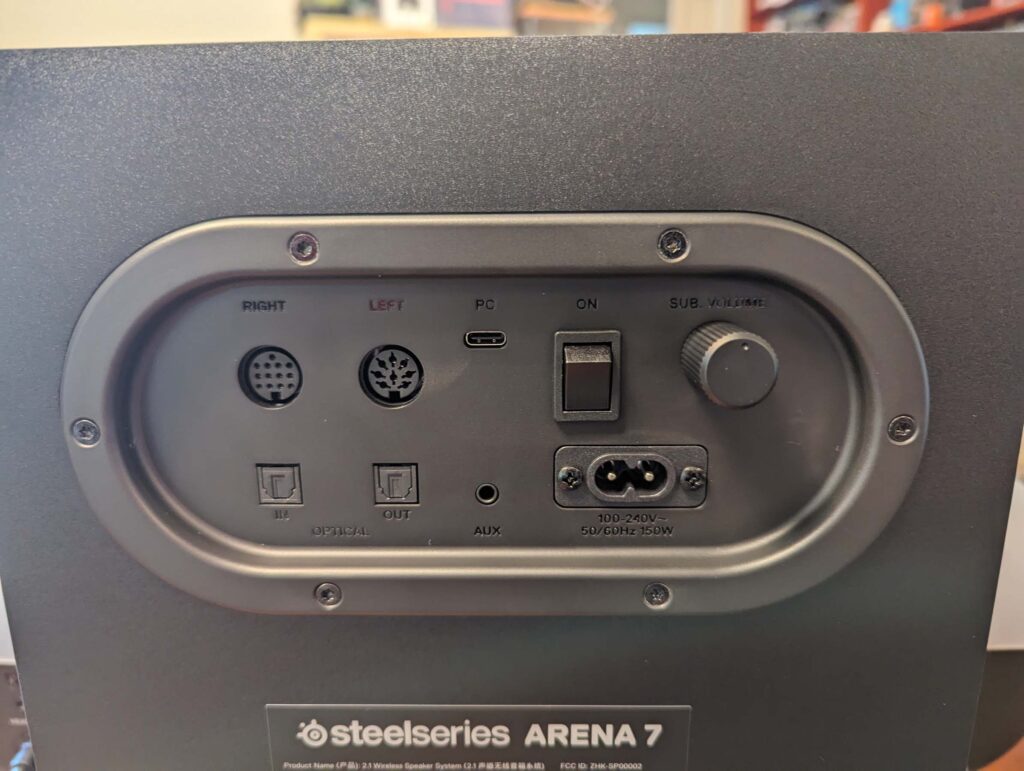
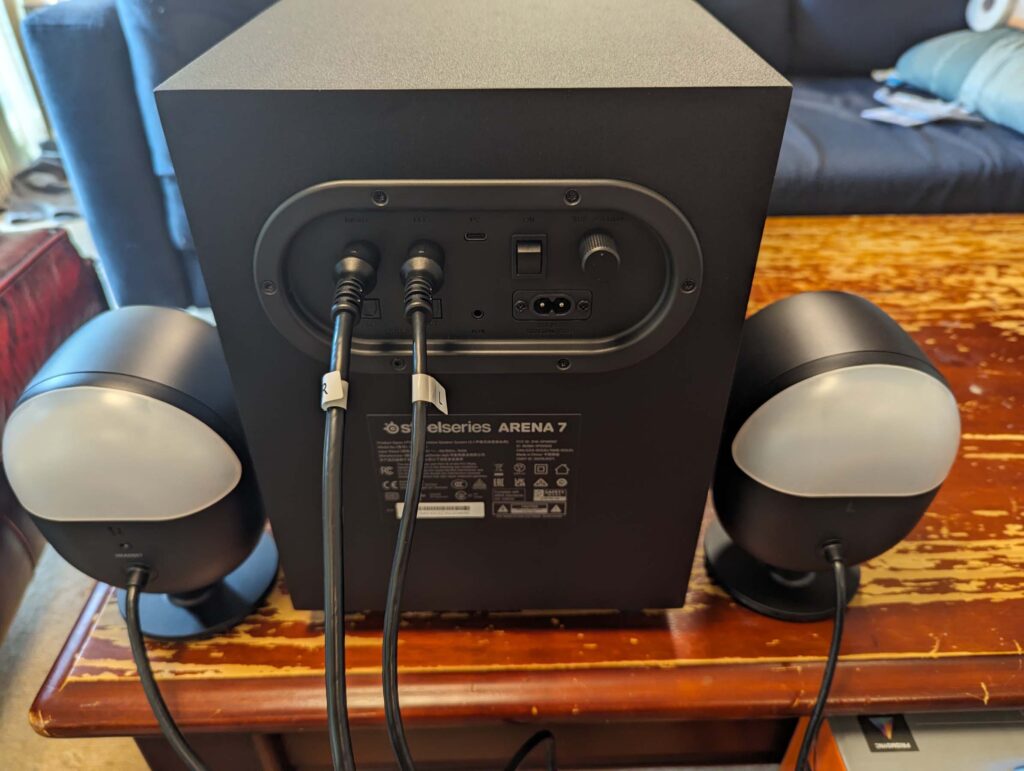
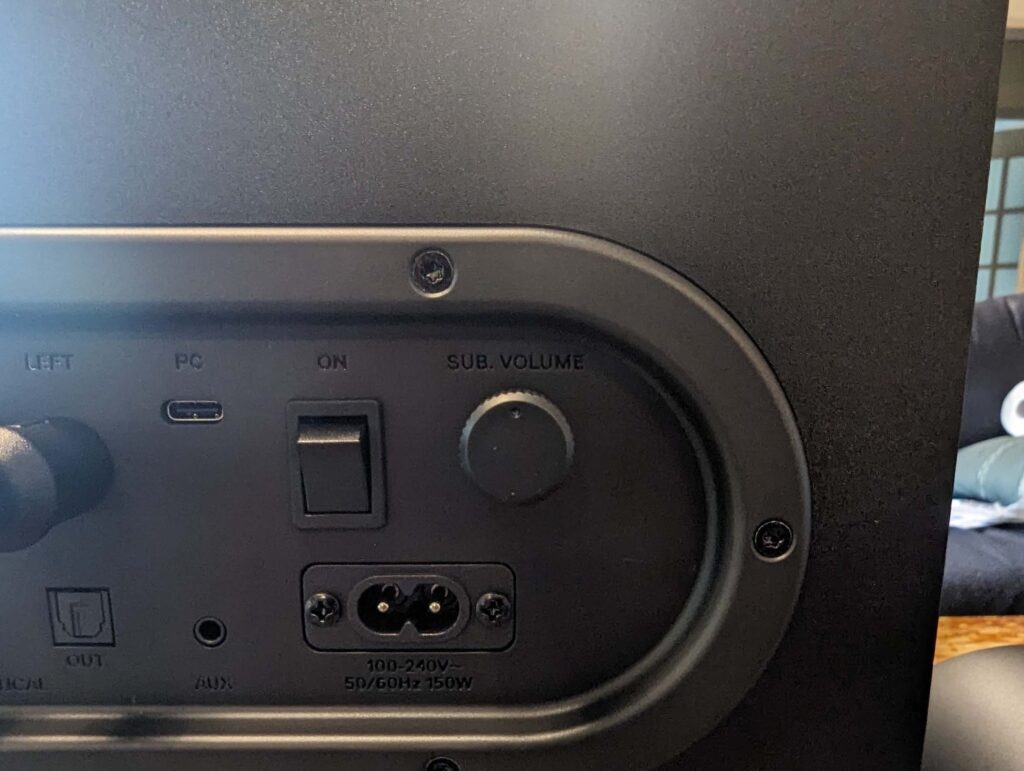
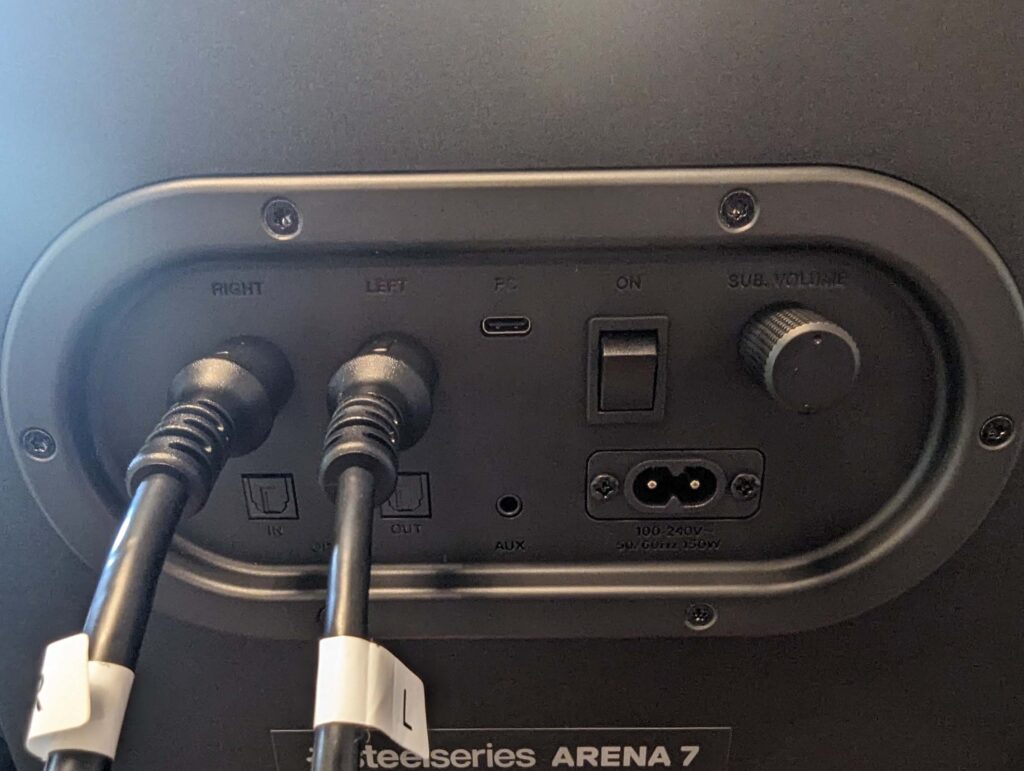
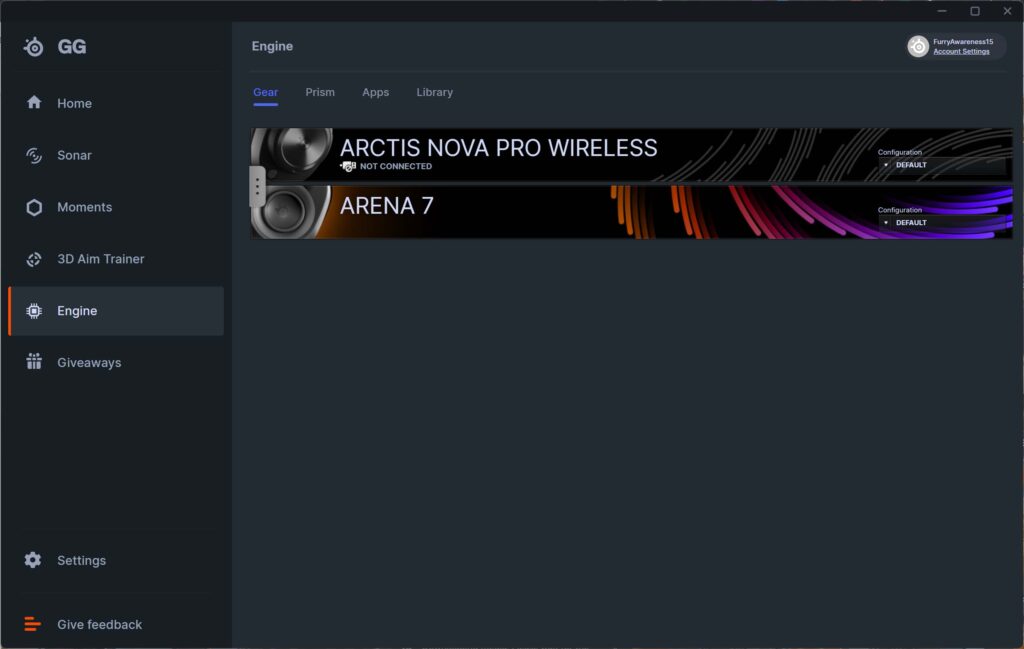
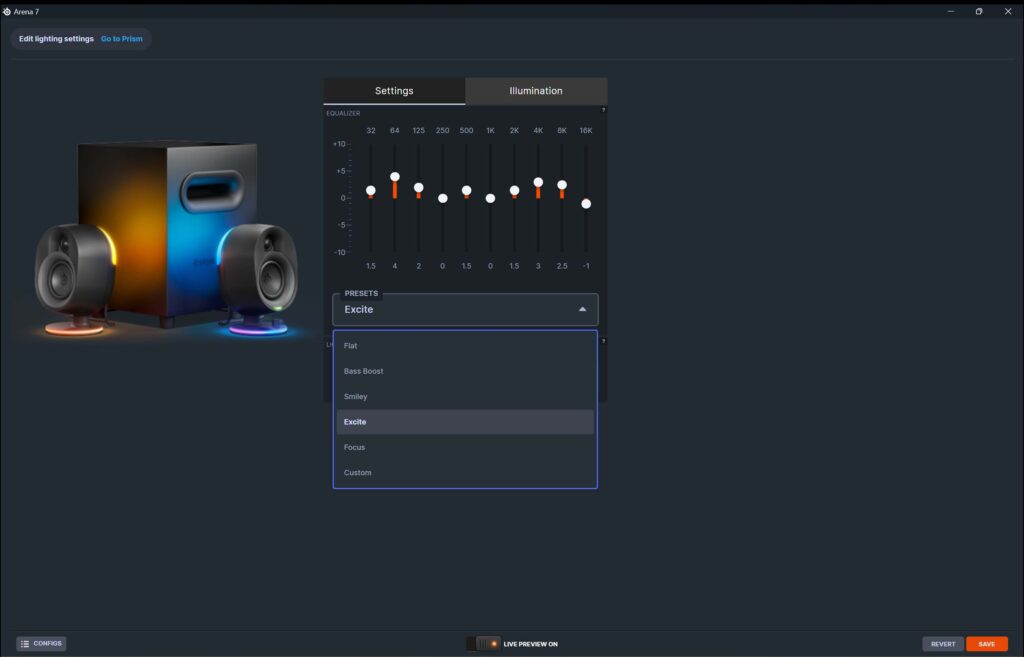
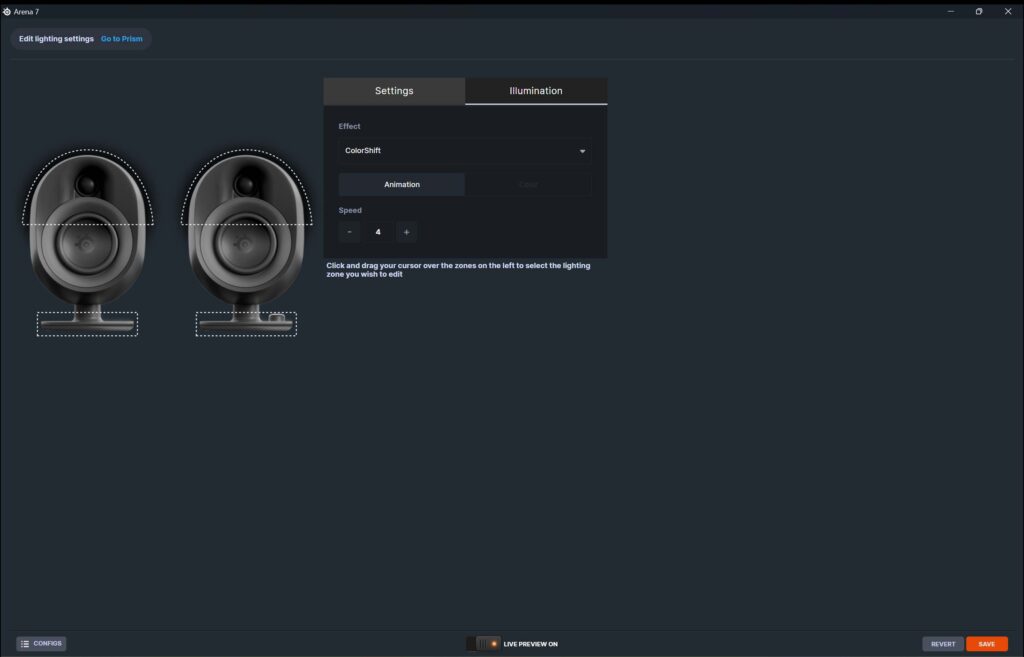
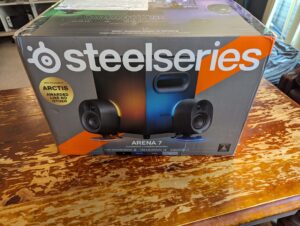
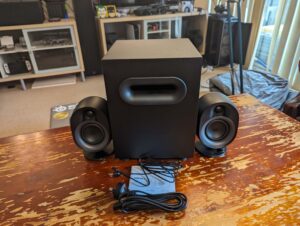
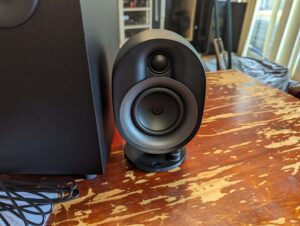
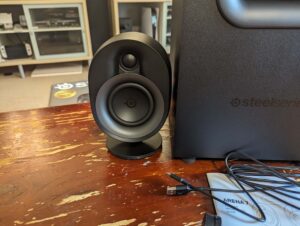
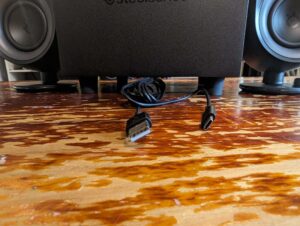
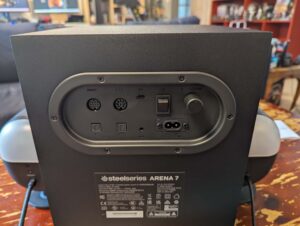
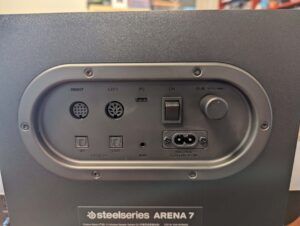
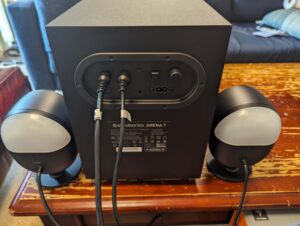
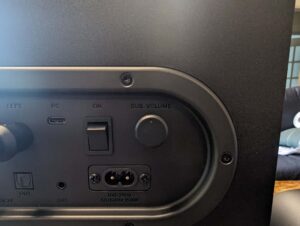
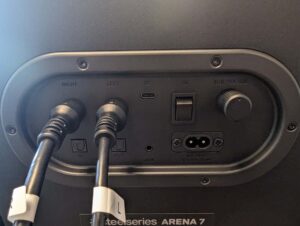
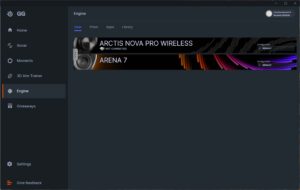
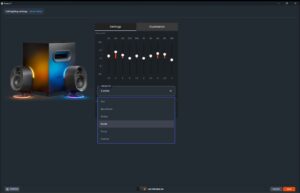
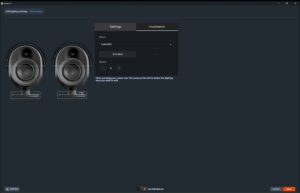
At the time of writing, the SteelSeries Arena 7 was on sale at multiple outlets for under $500, which adds to the overall value. While the full RRP may make you look elsewhere, if you can nab the Arena 7s for around $500, your ears will quickly thank you. These PC speakers are a cinch to set up, easy to tweak and offer great audio with plenty of volume to spare whether you’re gaming, listening to music or watching videos.
How we review speakers
Our main focus with speakers is how they sound. This means we put them through the paces of everyday use, depending on what they’re designed for. If it’s TV speakers, we use them to watch a variety of content, including TV shows, movies as well as playing games.
For other speakers that aren’t designed for TV, we spend a lot of time listening to a variety of music, comparing them to whichever speakers are our typical go-to options. We like speakers that are incredibly easy to set up and just work after being connected without having to tinker with software. That said, we also look at any available companion software to test the versatility of speakers, particularly smarter options.
Connectivity is important, which is why we favour speakers that offer the user plenty of options, including wired and wireless. Basically, the more versatile a speaker in terms of its uses, the more potential uses it has, and the greater its value. Where available, we also test remotes to ensure they’re intuitive and responsive as well as other applicable features like voice control.
SteelSeries Arena 7 frequently asked questions
Related Articles





